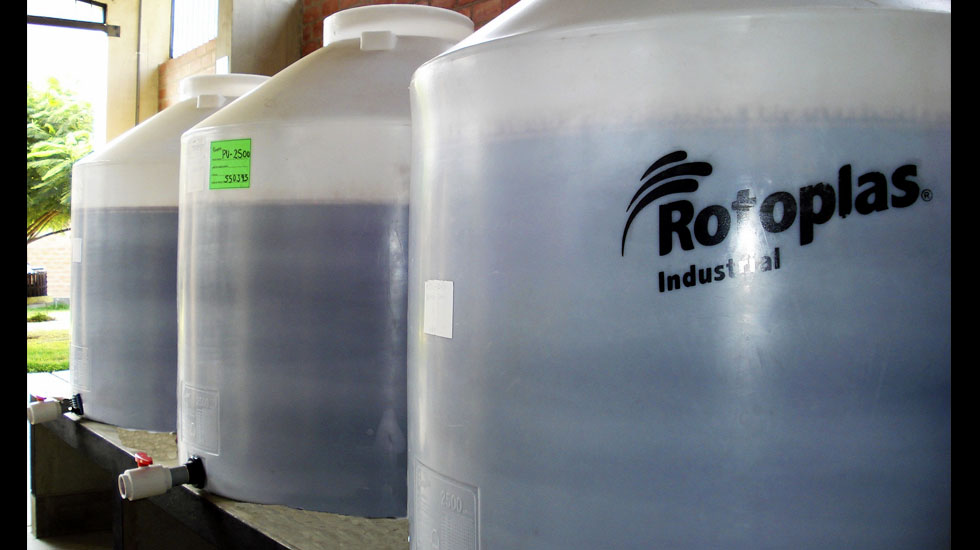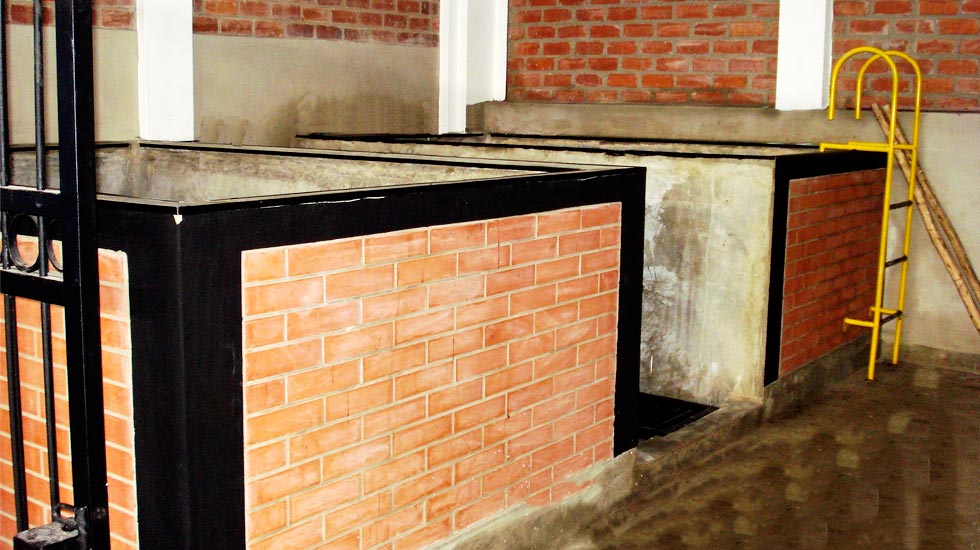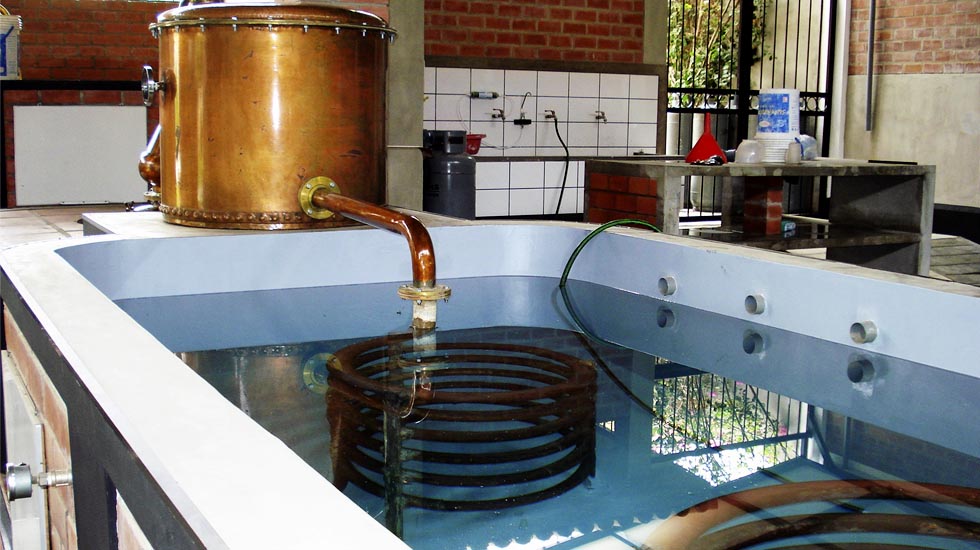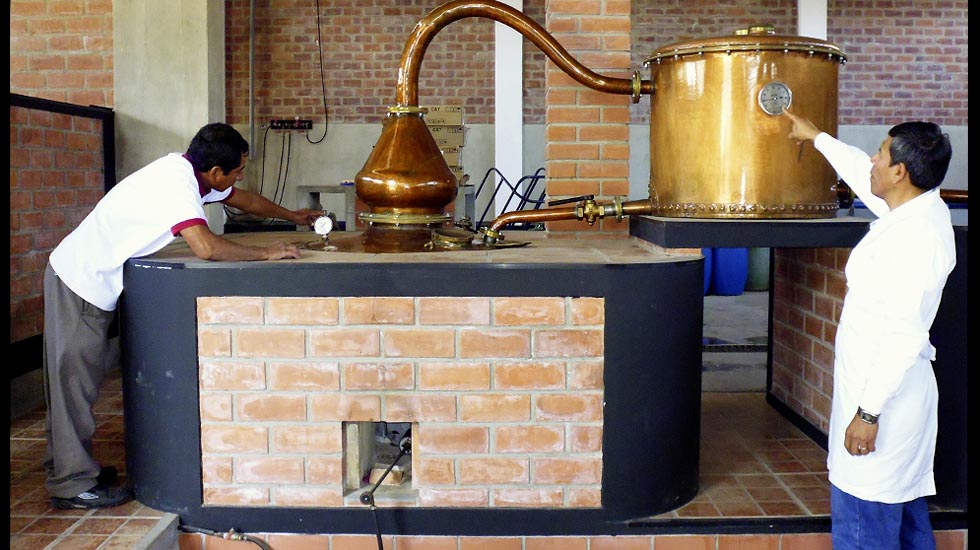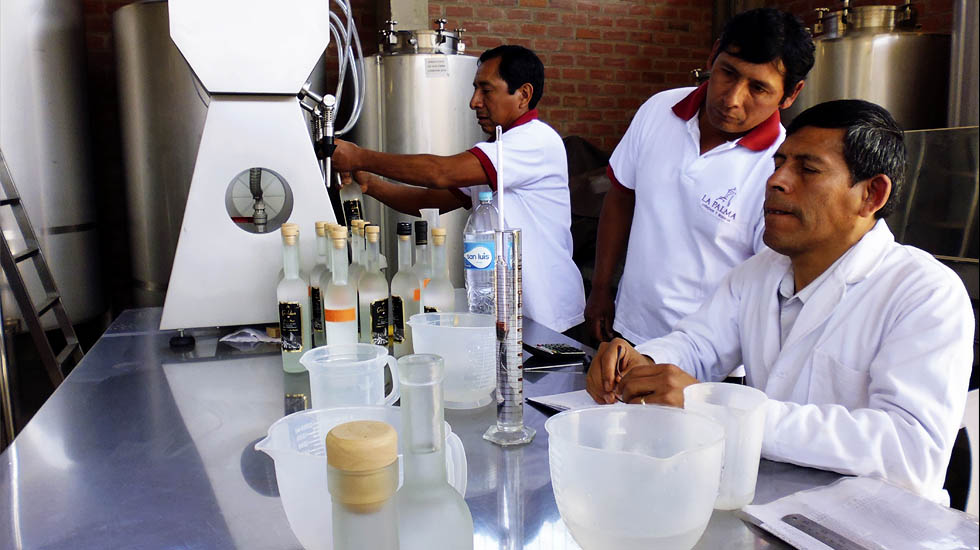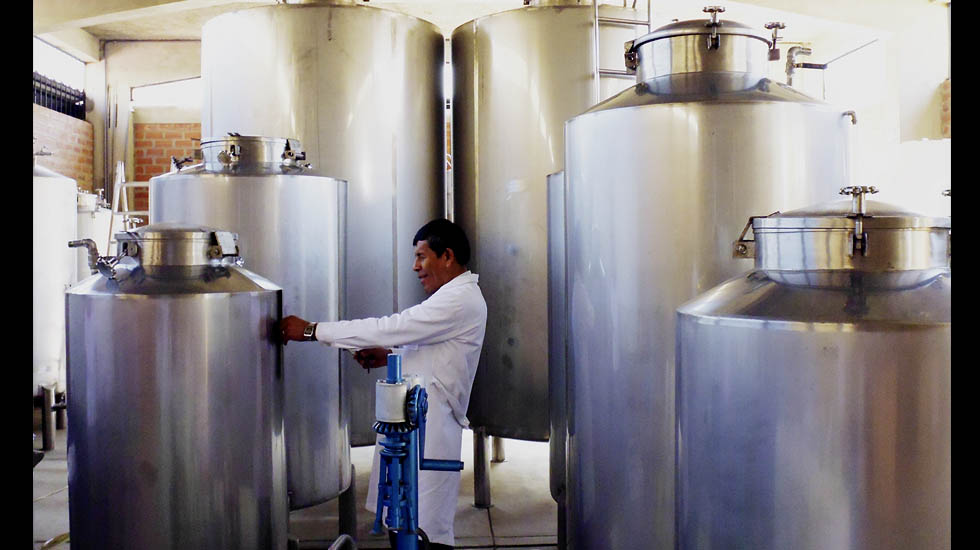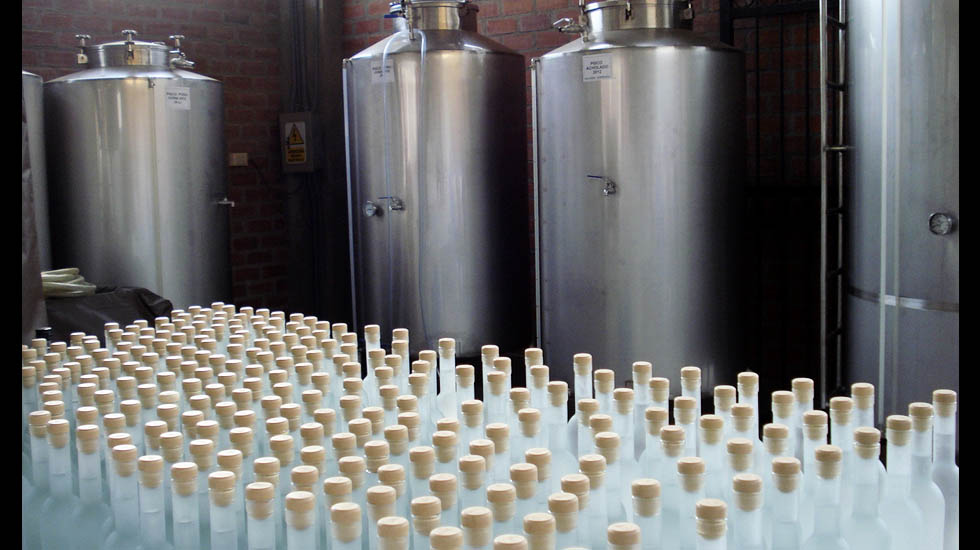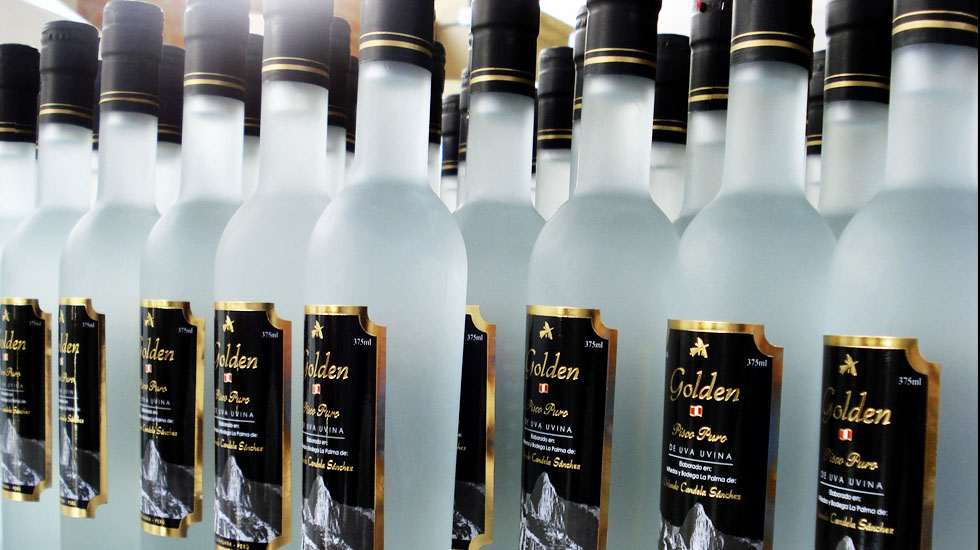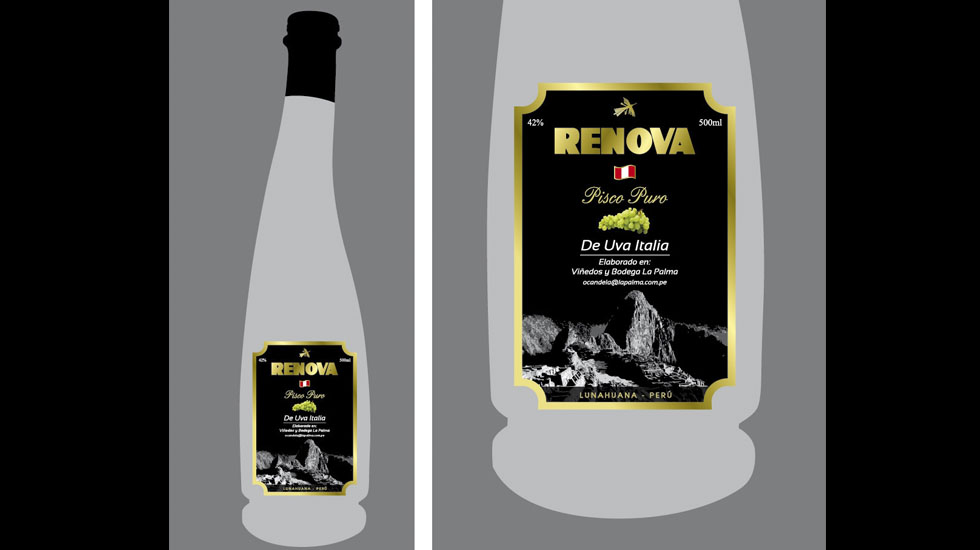About Pisco
The Lunahuana Valley has an optimal climate for growing various types of grapes, classical strains, grown in this blessed valley for over 500 years and which are intended for the production of pisco. The liquors produced in Lunahuana Valley have worldwide recognition having competed as equals with ancient and experienced European and American liquor brands such as whiskey, vodka and other distilled liquors. Such is the degree of acceptance of Peruvian pisco in the world that in 2006 the Austrian House Riedel, who has been working the glass business for 250 years (founded in 1756), has designed the Riedel Cup for the Pisco of Peru. The presentation of the cup was held on May 11 in the city of Vienna, in the framework of the Summit of the European Union and Latin America, having 40,000 units originally manufactured for importat to Peru. Its market launch took place on June 24, 2006. On this day there was a presentation ceremony of the Riedel Pisco Cup, which took place in the Government Palace in Lima, with the assistance of the Peruvian President Alejandro Toledo, and President of Riedel, Georg Riedel. The design took a year of work and tested 29 prototypes; participated in this test leading peruvian tasters, who analyzed the prototypes from the point of view of the characteristics of Peruvian Pisco. Padelis Paliouras, Riedel House representative for Latin America, and Johnny Schuler said that "The design is not only because aesthetics, but primarily to physics. Their structure allows exit out the best pisco".
VARIETY OF PERUVIAN PISCO
In the region, specifically in the area of Lunahuana, Pacarán and Zuñiga, it is widespread the use of the "uvina" variety for making wine and pisco. It is, so to speak, the signature grape of the area. The uvina growns in our area for many years and is said that in ancient times it grew wild. It was rediscovered a few years ago for its resistance to the diseases of vines and also, blessed uvina, to contain, in the seeds of the fruit, astonishing amounts of antioxidants. Depending on the grapes used in the production and distillation process, recognized by the Peruvian Technical Norm, there are four types of pisco: Pure Pisco: Special for its fine distillation of a single variety of grape. It is obtained from both non-aromatic varieties: "uvina, quebranta, mollar and negra corriente", and aromatic: "italia, torontel, albilla and moscatel". On tasting, it has little aromatic structure in the nose, in the smell. This allows the drinker does not saturate or tiring in his taste sensations. It has a complexity of flavors in the mouth. It is the favorite of Ica and it is also used to prepare the Pisco Sour. A recent study reported that among Peruvian consumers the most consumed pure pisco is made with quebranta, which is preferred by 40%. Green Musts Pisco: Coming from the distillation of fresh musts fermented incompletely. It is made from musts that have not completed the process of fermentation. In other words, the juice is distilled before all the sugar is converted into alcohol. That's why it requires a greater amount of grapes per liter of pisco, which increases slightly the product. The green must is a subtle, elegant, fine and full-bodied pisco. Its structure has a varied aroma and flavor, and also a tactile sensation in the mouth. Distil the must with residual sugar do not imply that the pisco is sweet. Glucose is not eliminated by the still as it evaporates only alcohols. However, this small amount of sweet wort conveys a very particular characteristic contributing body to its structure and a "velvety" feel in the mouth. Acholado Pisco: Coming from the mixture of different grape varieties or from piscos. Made with a blend of several strains. The definition of "acholado" means by "analogy" with the term "cholo", meaning a "mixed race native to the Andes of Peru". Approaches the" blended "(mixture) as is blended a Scotch whiskey, cognac or sherry. For a better understanding, it is possible to established that the pure and aromatic piscos are "varieties" or "single malt", and acholados, "blended". The acholados combines the structure odor of aromatics with the flavors of pures. Each producer secretly cherishes the proportions used in acholado, creating a diferents kinds of varieties and flavors. Acholado pisco as raw material of pisco sour, becomes particularly appreciated by connoisseurs. Aromatic Pisco: Elaborated from aromatic pisco grapes. It is made with aromatic varieties strains: italia, moscatel, torontel, albilla. At tasting it provide the nose a range of aromas of flowers and fruit, confirmed on the palate with a complex and interesting aromatic structure, besides providing a prolonged nasal retro feeling. They are perfect for cocktail, to prepare pisco of chilcano, which base must be an aromatic pisco. According to a recent study, the italy aromatic pisco (made from grapes of the same name) has 20% of the peruvian market and the higher preference in the female segment. Finally, there are two types of pisco that are not yet covered by technical standards: Flavored Pisco: Elaborated in a traditional way but aromatized, that is to say, during the distillation there is added the aroma of other fruits during. For this, the producer put a basket in the pail with the fruit picked. The basket hangs from the base of the capitel. Wine vapors are the ones that extract the flavors of the fruit when they go through the basket. In the market there are lemon, cherry, tangerine and other flavors. Macerated Pisco: They are prepared with pisco as a macerating element and fruit as a macerated element. It preparation is easy, usually done at home being a greatly appreciated digestive. To prepare it simply take a wide-mouthed jug, put the fruit you prefer, add pure pisco and let it marinate a few weeks. People in Peru use its imagination to such preparations, adding orange peel, a little honey, cinnamon, some raisins and whatever your imagination suggests.
MANUFACTURING PROCESS
The production of pisco begins with the careful selection of grape strains, that will be planted and cultivated to make our pisco. This selection is very important, it will determine to a large extent the distinctive flavors and aromas of the end product. After a dedicated cultivation and care of plants finally comes the harvest, the fruit of the vines is collected and brought to the winery, where the manufacturing starts. In the past they were transferred to the vats, where the fruit juice was extracted by a group of people called "pisadores", usually young women who literally trampled the grapes to extract the precious juice. This operation, until today, is a celebration and a party called "The Vintage" which is one of the largest and meaningful celebrations of the region. At La Palma we use modern destemmers and crushers that are art machinery to ensure an efficient process, maintaining its spirit. Immediately, the juice is transferred to maceration tanks where it starts, naturally, a fermentation process that is carefully controlled to prevent product loss of natural flavorings, spirits of the pisco. When juices have reached their optimum fermentation, meaning the sugars have been converted into alcohol by the action of the yeast contained in the skin of grapes, begins the final stage of production. The distillate. It is said that here lie the great secrets of distillers. Peru is the only place in the world to use pure grape juice, without adding nothing, even preservatives or flavorings. From there, it is perhaps derived the exquisite flavors and aromas of our pisco, is where its aromatic structure is built, and that complex flavor which can be perceived in the mouth when tasting. The distillation process involves heating the fermented juices to the point of evaporation, the vapors are cooled by a serpentine and then condensed, obtaining finally our famous pisco. However, not all of the condensate can be used. This involved the expertise of the manufacturer, today supported by a thorough system of measurements and inspections, to attain a product of good quality, wich has between 42 ° and 44 ° alcohol, and that retain its pleasing aroma and excellent body and flavor. The liquor thus obtained is transferred to resting tanks for a specified time. These tanks are made of stainless steel, in order to not affect the qualities of aromas and flavors. In Peru, there are standards that, in some way, regulate the process, in order to ensure quality and protect the appellation of pisco. Finally, it is bottled and can make available to public for the enjoyment of beginners and experts.



